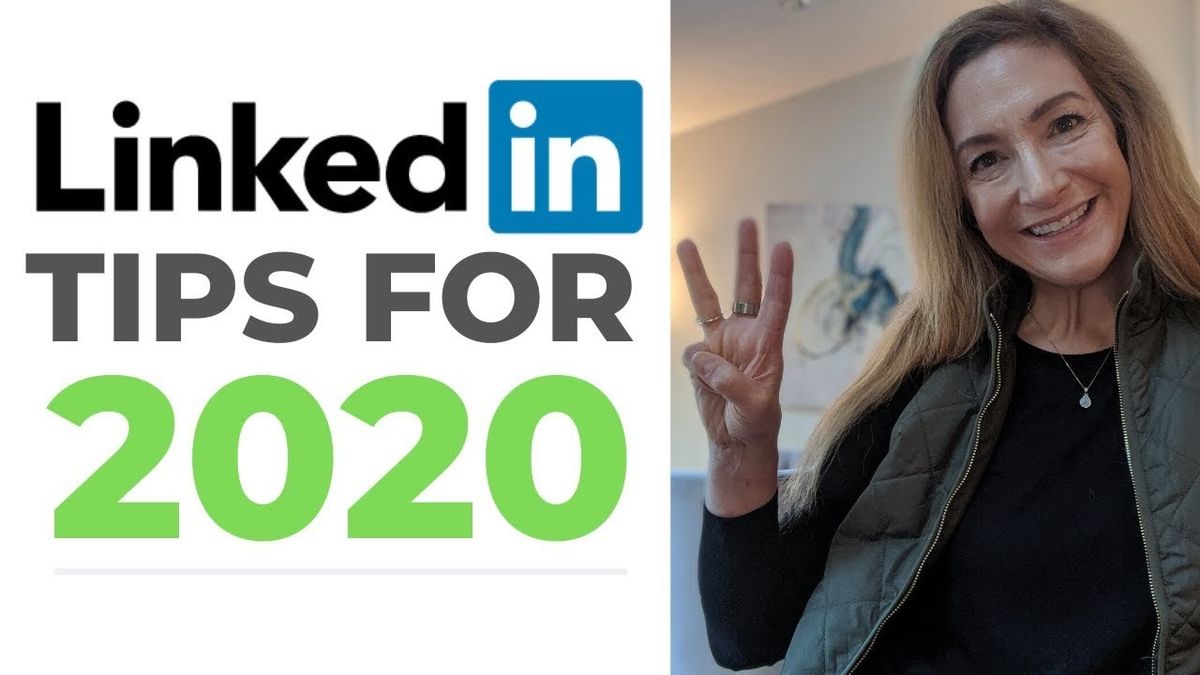Recently, I did a video on the difference between being a pontificator and a practitioner, especially on LinkedIn. A lot of you are avoiding using LinkedIn the way you need to because you're very fearful of coming across like a pontificator.
Pontificator vs Practitioner
To recap, a pontificator is someone who comes off really arrogant, really on their high horse, a know-it-all. I want to tell you three things you can do to make sure you look like a practitioner on LinkedIn, not a pontificator.
A practitioner is the opposite of a pontificator: someone who is really authentically well branded. So, for 2020 these are my three tips I need you to understand.
Personal Branding = Reputation Management

Bigstock
LinkedIn is not a social network; it is a social marketplace. It has 660 million users and counting. It's going the way of Facebook. It's going to have a billion people on there. You are a business of one. This is your Yellow Pages. This is where you have to present yourself to the world.
If you don't do it, you are going to miss out on job opportunities. And more importantly, you're going to lose credibility. This is a reputation management platform. We hear personal branding all the time, and that's really reputation management.
Tip 1: Write In The First Person

Bigstock
If you want to come across as a real, true expert, who's good at your craft (a practitioner), as someone who is a humble, powerful, effective person (not a pontificator), then you need to know how to use this platform correctly in 2020 and beyond. So, the first tip that I'm going to give you is to make sure that you do not write your profile in the third person.
I actually wrote an entire article for LinkedIn on this. You'll see why when you are in a third person, when you talk about it, you come across so badly. When you write your profile in the first person, it's you.
Tip 2: Long-Form Posting
The second tip, you have got to start doing long-form posting. Now, this isn't writing articles per se. You don't have to write an article, but you do need to curate content and post it on LinkedIn.
So, what do I mean by curate? Well, as a practitioner, as somebody who's really good at your craft, as somebody who studies hard and geeks out and wants to constantly improve, I know you're taking in information like articles and videos and other things to educate yourself, right? Ongoing, lifelong learning.
You should be taking those articles and videos that really resonate with you, that taught you something that you think are powerful. Maybe you agree with them or you disagree with them as a practitioner. When you have a strong reaction to a piece of content, you should be posting it in your feed and explaining why it resonated with you in long-form, not one sentence.
Encourage people to engage with your posts as well, as if you were in a real-life conversation. Now what that's going to do is make people aware of what you care about.
Make It A Habit

Bigstock
When you do this Monday through Friday on LinkedIn, week after week after week, when you make long form content a habit, not only will it get easy, you'll come in and you'll set aside 10 minutes a day and you'll do it, and you'll see results! I know that because I practice what I preach. I do this every day on LinkedIn and people are bringing things to me, opportunities, all sorts of things.
It didn't happen overnight, but this is like anything. When you build a habit, when you're consistent brick by brick, you build the house and suddenly you've got this beautiful house, right? Well, that's what I'm asking you to do.
Just share something.
You'll Become Memorable

Bigstock
When you share and give value every single day, it will make a difference. Now, here's what you want to think about in marketing.
We know it takes about 9 to 20 times for a message to sink in with someone. So, the other reason you need to be doing this every day is your colleagues aren't going to see every post that you do, but if you do it every day, Monday through Friday, over a period of time, eventually they're probably going to see nine of them, 20 of them, and then they are going to make the connection.
You are a practitioner of this particular skill or industry or job and when an opportunity comes along, they're going to remember the person they know that talks about that all the time, that shares really good information about that all the time, that person on LinkedIn and you want that to be you.
Tip 3: Engagement

Bigstock
My third and final tip is to always take the time to comment back on the people that comment on your long-form post.
Engagement! I always set time aside, usually right after I post something on LinkedIn, and check in any of the initial comments. I immediately comment back and like comments that I agree with.
I want to acknowledge that that's currency and I want to acknowledge that they've given their time to me. I'll tag them in my response so that I know they're going to get a notification. I do that every single day.
The 1%

Bigstock
I have a lot of followers. I'm so lucky for all of you. That's helped me build this into a platform where I can engage, have meaningful conversations here on the social marketplace and have people come to me with ideas and opportunities. It doesn't cost me anything to do the three things I just described. These are the things you've got to do in 2020 and beyond.
99% of you are going to read this article and go, "Oh yeah, it makes sense. I get it." But, you're not going to do anything about it. I now want to talk to the 1% that do.
Are you part of the 1%? Come join me in the Work It Daily platform. The 1% want career insurance in 2020 and beyond. The Work It Daily players, the people that want to level up their game, knock their LinkedIn profile out of the park, are joining our private micronet. Come check it out today!




